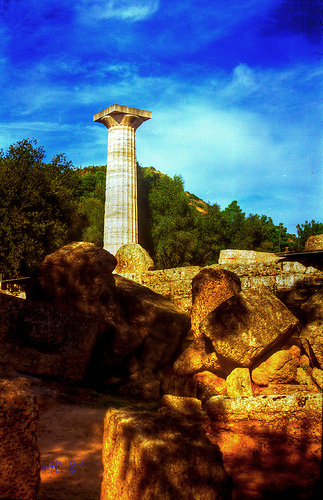Fascinating Facts You May Not Know About the Statue of Zeus at Olympia

What’s left of the Temple of Zeus at Olympia that was the home of Phidias’ sculpture.
The Statue of Zeus at Olympia is one of the seven wonders of the ancient world and one of the most remarkable things to be constructed during antiquity. You probably already knew this. But did you know there have never been any copies of it found anywhere else in the world, a rarity with ancient art? Or that detail about it has been gleaned partly from ancient Greek coins?
Whether you spend your days working at alcohol rehab treatment centers or teaching kids about Ancient Greece, you’ll find these little-known facts about the statue of Zeus at Olympia fascinating.
A Bit of Background
Phidias, a Greek sculptor, painter and architect who lived during the fifth century B.C, constructed the impressive statue. In addition to the statue of Zeus at Olympia, Phidias sculpted Athena at the Acropolis. Phidias fitted the Zeus statue with plates of ivory and gold, which covered a wooden framework. The throne that the god sat upon was made of ebony, ivory, gold and precious jewels.
The statue is believed to have been 42 feet tall, and that was with Zeus seated on the throne; imagine how big it would have been if the great god were standing in all his glory. In his two hands Zeus held a scepter with an eagle beside it and a smaller statue of the goddess Nike.
Phidias said that he was inspired by book one of Homer’s “Illiad” for his interpretation of Zeus, who was bearded and half covered by robes in the statue. Back in the 1950s, archeologists discovered the workshop where Phidias toiled over Zeus, and that has helped to establish when exactly the statue was built, based on the tools that were used to build it.
What’s True and What’s Not
The statue was destroyed centuries ago, and so most of what we know about Zeus at Olympia is knowledge that has been handed down as fact, or information based on primary sources from the time. The exact date of the sculpting of the statue, for instance, was long up for debate until the workshop was uncovered. Now most believe it was in the third quarter of the fifth century BC.
The demise of the statue is also something that’s been quarreled over. Some claim it was taken apart and brought to Constantinople, where it was destroyed in a fire. Others say the fire that claimed the temple in 425 A.D. also brought down the statue. And still others say there was a more otherworldly force at work — that Zeus himself laughed when the Roman Emperor Caligula ordered the statue be taken apart, and that laughter led the statue to break up.



